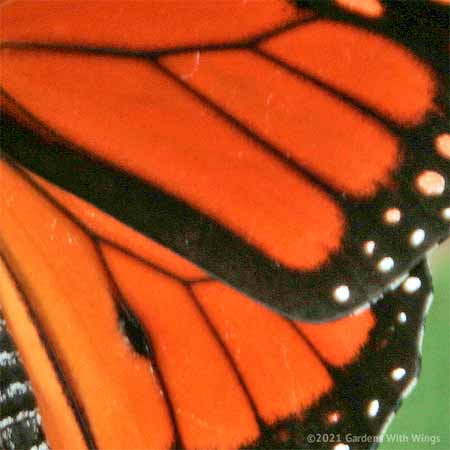by Regina Cutter Edwards – Entomologist
The anatomy of butterflies is complex. Butterflies are insects, and they have an exoskeleton with jointed legs and three basic body parts; head, thorax, and abdomen. Their body is like no other creature in the world.
The distinctive characteristics of a butterfly are much more impressive. Butterflies have two types of eyes, legs and antennae to help them find plants, a tube for feeding, and wings made of tiny scales. Continue reading to learn about the complexity of butterfly anatomy.
Table of Contents
How Do Butterflies See?
Butterflies have two different types of eyes, simple and compound. The one pair of simple eyes, ocelli, are single-chambered and are primarily for determining light brightness. They are unable to focus on an individual object.
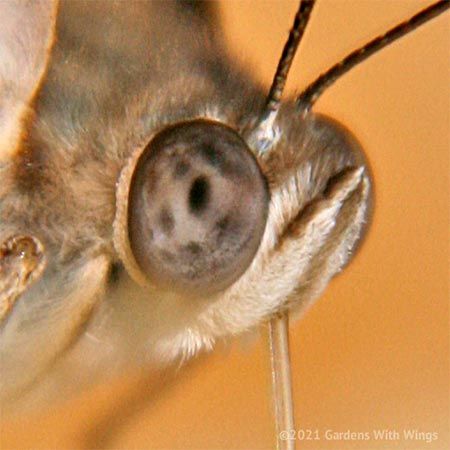
Butterfly Compound Eyes
The compound eyes are multifaceted and are used for their main eyesight. The light comes through one facet and is received by one rhabdom, similar to human retinas. Butterflies are able to see light wavelengths from 254 to 600 nm, this includes ultraviolet light, a light that we are unable to see. People can see only 450 to 700 nm.
What is Flicker-fusion Rate For Butterflies
Flicker-fusion rate is the rate at which the light flickers to form a continuous image. For butterflies to see while flying their flicker-fusion rate is up to 250 times higher than it is for people. Our flicker-fusion rate is between 45-53 flickers per second.
How Do Butterflies Eat?
For adult butterflies to eat, they have a siphoning-sucking mouthpart structure, it’s called a proboscis. It is similar to a long tube (straw) and coils up underneath the head of the butterfly. In the center of the proboscis there is a food tube through which the nectar is siphoned. Along two sides of the food canal, there are small muscles that control the coiling and uncoiling of the proboscis.
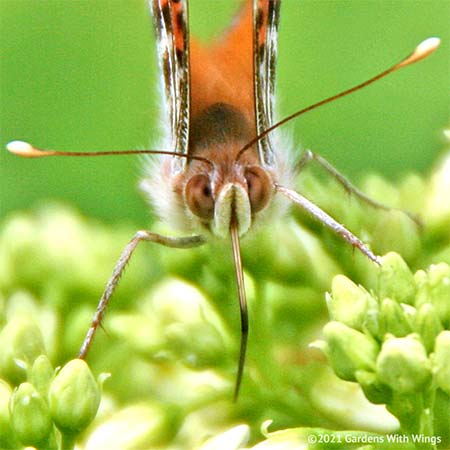
Why Are Butterfly Antennae Important?
Butterfly’s have one pair of segmented antennae. The basic shape is clubbed, meaning the segments increase in size as it gets further away from the head. For butterflies, this usually creates a club-like appearance on the tip of the antenna. Butterfly antennae have chemoreceptors that are used for assessing the environment’s physical and chemical properties. Chemoreceptors are similar to the taste buds on our tongues.
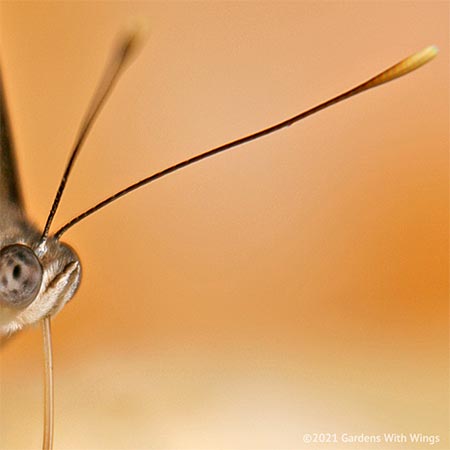
They are open nerve endings that transport the information to their central brains for translation. For example, butterflies use their antennae to detect which plants are producing nectar and males can sense pheromones from females of the same species.
Near the base of the antennae, in the second antennal segment, there is also a very important organ called Johnston’s organ. It is used for balance and orientation during flight. With an antenna lacking, it can be difficult for butterflies to fly in a particular direction and they may end up flying in a circular pattern.
Tiny Scales on Butterfly Wings
Butterflies have beautifully colored wings that appear to be every color imaginable. They are covered in hundreds of thousands of tiny scales. The colors are determined by the layering and overlapping of the scales. These colors offer many benefits to the insect; they assist the butterfly by either camouflaging or by warning colorations that deter potential predators. Many butterflies also have ultraviolet colors on their scales as well. Although people cannot see these colors, butterflies can. Many times they are able to distinguish sexes by these additional colors on their wings.
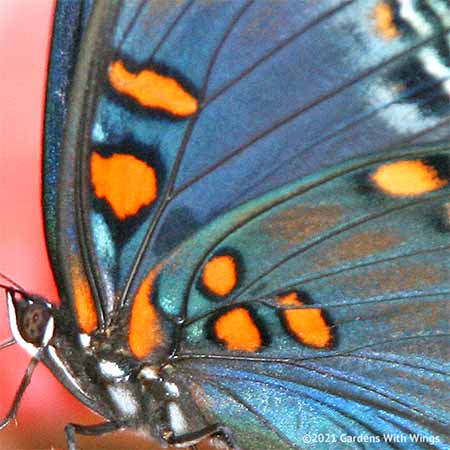
Butterfly wings often exhibit melanism, the darkening of wings, veins, or wing scales and this assists with thermal regulation. Butterflies are ectotherms, needing external sources to warm them. Butterfly wing veins are hollow and hemolymph, the insect’s blood, is able to circulate through the body. When the temperatures are cooler outside butterflies are able to warm quicker with darker colorations.
Butterfly wings are hydrophobic, meaning they repel water. The microtopography on the wings allows water molecules to easily roll off the surface. This has an additional benefit, when water is repelled it works as a cleaning mechanism. Dirt that is collected on the wings and can inhibit flying is removed along with the water; it helps keep the butterfly’s wings clean.
Anatomy of Butterfly Legs
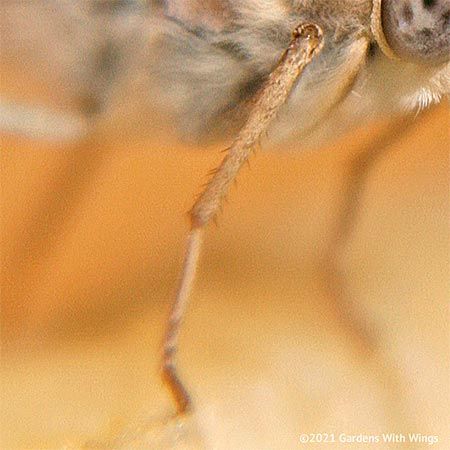
Butterflies have six jointed legs and each leg has six parts; coxa, trochanter, femur, tibia, tarsus, and pretarsus. The tarsal segments at the ends of the legs have chemoreceptors which are important for the butterfly to smell and taste. A female butterfly is able to determine if a plant is suitable to lay eggs upon by the chemical released from the plant after drumming their legs on the leaf surface.
The chemoreceptors only pick up certain chemicals, which are genetic. For example, a Monarch butterfly will respond to the chemical release of certain milkweed plant species by laying eggs, but will not lay eggs on a snapdragon plant like a Common Buckeye. Butterflies are also able to locate food sources by using chemoreceptors in their legs.
Next Up…
References:
Borror, D. J., Triplehorn C.A., Johnson, N.F. 1992. The anatomy, physiology, and development of insects. An Introduction to the Study of Insects (6th Ed). New York: Saunders College Publishing. pg. 24-73.
Land, M.F., 2003. Eyes and vision. Encyclopedia of insects. Ed. Vincent H. Resh, Ring T. Cardé. New York: Academic Press. p 393-406.
Nye, J., 2007. Nanoscience uses biomimicry. University of Madison Wisconsin. Accessed 2008 Dec 1.
Powell, J.A. 2003. Lepidoptera (Moths, Butterflies). Encyclopedia of insects. Ed. Vincent H. Resh, Ring T. Cardé. New York: Academic Press. p 631-664.
Roland, J., 2006. Effect of melanism of alpine Colias nastes butterflies (Lepidoptera: Pieridae) on activity and predation. Can. Entomol. 138: 52–58. Accessed 2008 Dec 1.
Smithsonian Institution, 2003 May 1. Butterflies use polarized light to attract mates. ScienceDaily. Accessed 2008 Dec 1.
University of Groningen, 2008 Jan 22. Pigmentation in some butterfly wings created by nanostructures. ScienceDaily. Accessed 2008 Dec 1
https://www.sciencedaily.com/releases/2008/01/080117201947.htm.
Winterton, S.L. 2003. Scales and setae. Encyclopedia of insects. Ed. Vincent H. Resh, Ring T. Cardé. New York: Academic Press. p 1017-1020.
Yturral, K. Ask a biologist. Arizona State University. Accessed 2008 Dec 1.
